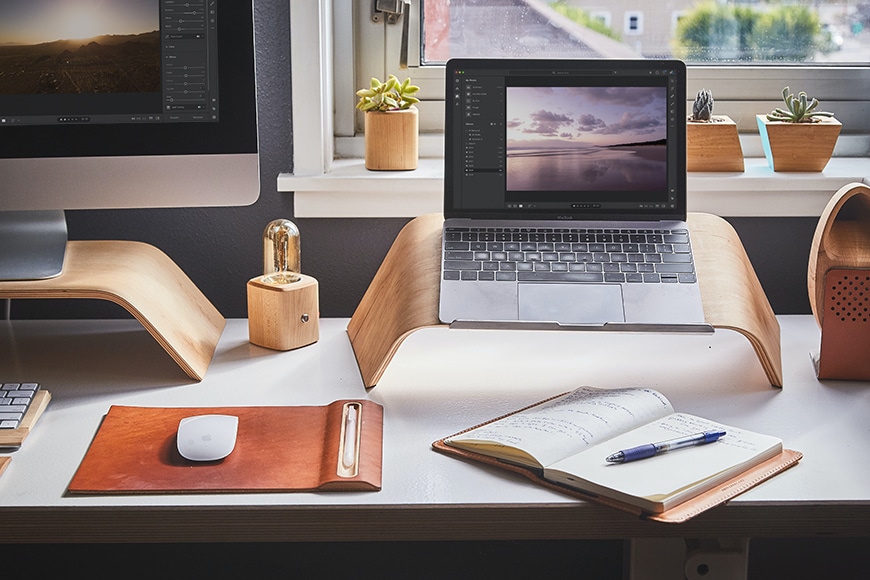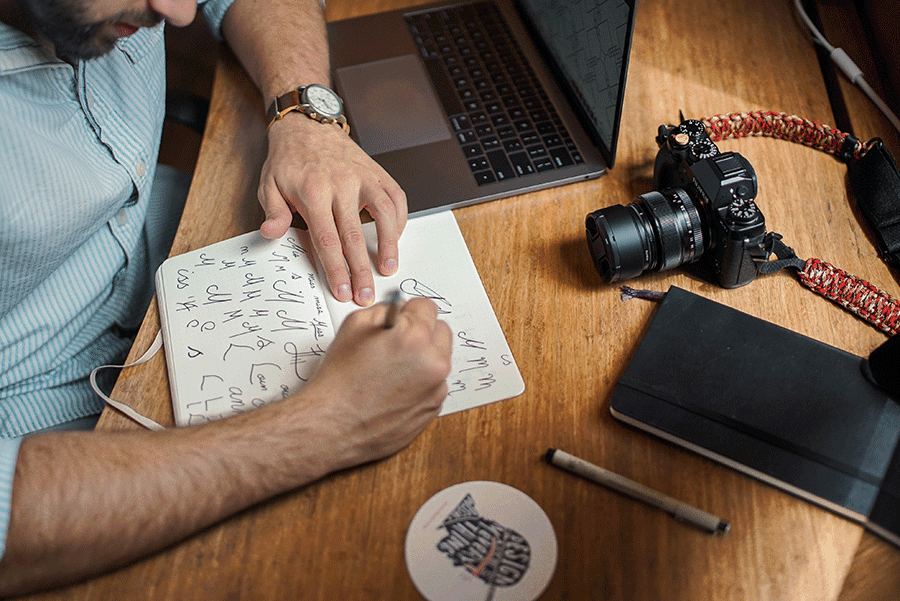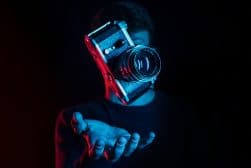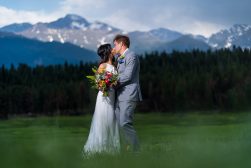
How to Start a Photography Business in 2024
Want to learn how to start a photography business in 2024? This in-depth guide will teach you all you need to know to become a professional photographer!
Learn | Photography Guides | By Mark Condon
Want to learn how to start a photography business in 2024? This in-depth guide will teach you all you need to know!
I’ve run a wedding photography business since 2014 and learnt a lot as a professional photographer and business owner.
Starting a photography business allows you to make money using a skill you already enjoy, but it’s important to have a solid plan and realistic goals.
There’s no doubt that photography is a great career – you can earn a good living, make your own hours and travel to exotic places.
Best of all, you’ll make people happy. Whether you’re capturing priceless moments for families or nailing the client’s brief, photos are a precious commodity.
Is photography a good career? Definitely! It was one of the best decisions I ever made.
Now it’s your turn to learn how to start a photography business.
How do I Start a Small Photography Business?
Reduce risks with a home-based photography business

Not many professional photographers go from zero to renting a studio – most start off with a home-based photography business, where costs can be kept to a minimum.
As a small business owner, keeping costs low should be a priority, and running your photography business from home is highly recommended.
At this stage when you don’t even have a business plan, all you need is a place in your home from which to work – some private ‘office space’. If you’re using a laptop, you don’t even need a desk!
If you need to meet clients to book work (e.g. for wedding photography), you can do as I did and meet them in a local cafe – clients don’t expect to come to your home, even if you list your home address as your business address.
Decide what types of photography services you’ll offer

Credit: Szabo Viktor
What type of photography is most profitable? You can build a successful photography business by shooting commercial/advertising, event (weddings, corporate, etc), family (maternity, etc), freelance or stock photography.
However, it’s much harder to start earning money as a commercial photographer than, say, as an event photographer.
Also, while stock photography is a good passive source of income, freelance photography allows you to cast a wider net.
When starting your own photography business, it’s important to balance your passion for a specific genre with realistic goals.
Consider whether there’s a market for a particular type of photography in your area, for example.
I chose to focus on wedding photography since there’s a big market for wedding photographers where I live. I also thought shooting weddings would be fun and exciting, and I could also offer mini sessions, pre-wedding shoots and other related services.
You may want to offer several photography services under one unique photography business name, but I recommend focusing on just one genre to become a ‘specialist’.
You need to be the go-to photographer for a certain genre of photography – not the person who shoots everything since this can appear a little amateurish.
That said, there’s always the option to become a professional freelance photographer to offer a selection of different services.
Develop a basic photography business plan

Credit: Galymzhan Abdugalimov
Perhaps one of the most challenging aspects of creating a photography business is to know how to actually start.
A photography business plan is the first logical step to setting up a strong base camp that will allow you to build up your business without feeling overwhelmed.
How Much Do You REALLY Know About Photography?! 🤔
Test your photography knowledge with this quick quiz!
See how much you really know about photography...

What goes into your plan may vary, but at a minimum, you may want to include:
- Executive summary: You can start your photography business plan with an executive summary that defines what your general objectives are as well as your key factors of success.
- Company overview: Do an outline of the organizational structure of your business according to the terms of the area you are in. Will you be the sole proprietor? Will it be a limited liability company? What will be the business structure? Do you need business licenses? Will you have a business partner? What type of business will you run?
- Products & services overview: It’s important to create a detailed description of the products, services and prices you’ll be offering. This will help you to better navigate the many different client requests that might show up.
- Audience analysis: Understand who your target audience is and what channels will be most effective to reach them.
- Competitive analysis (market research): Have a look at the competition operating in your market locally, identify their strengths and in what ways you can differentiate yourself from them.
- Operations plan: Think about operations – what are the day-to-day logistics of running your photography business?
- Financial analysis: Make an effort to be financially savvy – this is very important! Create a financial plan to be in full control of all the nuances of your business cash flow. It’s likewise helpful to establish early on what your equipment requirements are and how much profit you expect to make.
- Timeline: Establish a timeline with clear milestones so you can track your progress and set goals that are increasingly more realistic and adapted to your situation. Think of it as a photography business roadmap to get you to where you want to be.
I should mention that it’s not worth getting too hung up on having every aspect of your photography business planned out in detail.
There are bits you simply won’t know yet and that’s OK! Do your best with it and don’t let writing a business plan become a block that prevents you from moving forward.
Once you have a basic business plan on paper, it’s time to get into the fun part – bringing it to life!
Find the Right Photography Business Structure
One boring-but-important topic when researching how to start a photography business is the subject of business structure.
In the USA, there are 6 main business types of legal structure to consider for your business: sole proprietorship, general partnership, limited partnership, Limited Liability Company (LLC), S Corp. and C Corp.
Sole proprietorships or sole traders are most common for small home-based businesses. They’re the easiest to manage and easiest to handle in terms of taxes since it’s usually just you involved in the running of everything.
You may also consider going into a photography business with a partner, which is actually similar to a sole proprietorship in terms of liability and taxes.
Each person is responsible for their own side of the business and all profits are split based on the percentages you decide. Of course, you also need to consider that all expenses and liabilities are also split between both partners.
If you want to protect your personal assets, many photography businesses opt for an LLC structure (Limited Liability Company). An LLC or S Corp provides one level of tax and also a layer of protection from personal liability.
At this point, it’s worth mentioning that deciding on a business structure should usually involve some legal advice, or at least, a lot of research on your part to decide what’s most relevant for you.
A quick note on business licenses – in most jurisdictions in the United States, no professional license is needed to run or operate a photography business. However, not all States are the same.
To know for sure whether your locality requires you to get a business license for photography, it’s best to call your local licensing board or city hall.
In addition to a business license, you should also start researching whether you need to use photography contracts or model releases for your line of work.
Putting in the groundwork now will set you up for success without any legal headaches.
Choose a photography business name & branding

Credit: Brad Neathery
Once you’ve decided what your speciality will be and the structure of your business, it’s time to think about your photography business name and branding.
This is what will differentiate you from the competition. It’s also important because of first impressions: when people see your branding, it can instantly give them an idea of what you do and what your style is.
With that in mind, consider the look and feel of your logo and typeface. Is it something quirky and creative, clean and modern, vintage classic…?
As for names, you might choose to name your photography business after yourself (e.g. “Bob Smith Photography”) or you could get creative and have it reflect what you do (e.g. “Maternal Memoirs” for maternity photography, or “Bedroom Eyes” for boudoir – I’m just making these up on the spot here but you get the idea!).
Don’t neglect to choose a unique or catchy slogan or tagline for your photography business.
The most important thing with branding is to be consistent. That bears repeating, so I’ll say it again: Consistency is key!
You want your brand message to be reflected across your website, business cards, social media accounts, and all materials you deliver to clients including final photo packages, invoices, etc.
Register a domain and create a photography website

It goes without saying that pretty much all successful photographers in 2024 have an online presence. That’s why the next step in starting a photography business is to create a photography website.
Your website should showcase your best work and give people an idea of who you are and how you work.
While there are plenty of free web hosting solutions out there, it’s worth investing a small amount to register your own domain name.
This not only looks more professional, but it’ll also help you rank in Google searches (just ensure your domain name reflects your business name).
From there, you’ll need to build your photography business website and connect your domain name to it.
Now, if your web design skills are non-existent, don’t worry: there are plenty of solutions out there that can make life ridiculously easy.
One of the best options is to use a content management system (CMS) like Wordpress – you can download elegant-looking, customisable themes (for example, Flothemes make some great ones) so the design and layout aspects are all there for you.
With a few clicks of the mouse, you can adapt a pre-made template to include your own branding and start getting your website out to potential clients.
Invest in professional photography equipment & software

At this point, you’re probably wondering: What kind of camera do most professional photographers use?
While there’s no one correct answer as to what is a ‘professional camera’, by and large, most pros use full-frame DSLR or mirrorless cameras.
However, some do absolutely fine by using APS-C sensor cameras, particularly if high ISO low-light performance isn’t required. (Full-frame sensor cameras are better at this, among other things.)
DSLRs are still an industry standard, but are somewhat of a dying breed – mirrorless cameras offer better features and more recent technology, although the number of native lenses still dwindles in comparison to those on offer for DSLRs.
You can see more of the differences between mirrorless and DSLRs here, but suffice to say, you won’t go wrong with either.
As for the question, what camera should I buy to start a photography business? Initially, it’s whatever you can afford, but once you start making a better income, you should always upgrade your equipment in line with what you need to complete your job efficiently.
For example, wedding photographers need cameras with excellent autofocus and high ISO capabilities, whereas a portrait photographer may not need either of these things.
There’s always the option of renting equipment when you first start out – get yourself a good all-round camera, then if any job comes around that’s out of its comfort range, hire something to suit.
The same goes for camera lenses, of which there are a plethora of options. Again, depending on the type of photography services you’ll offer, you can choose between a wide range of telephoto and primes at various price points.
Most pros can get by with an affordable and fast 50mm lens (nifty-fifty), so you can start your lens collection from there. Remember that buying used camera lenses is also a great option.
As for software, this is another area you’ll need to invest in in order to grow your own photography business.
Many photography business owners start out bare-bones with a mixture of Google Sheets for keeping track of expenses and clients’ information and Google Calendar. You’ll soon outgrow these, through.
When you start making money, you’ll also need some kind of accounting software to keep track of all the figures.
It’s wise to pay for premium photographer software early on as it can really help save you time and headaches in the long run.
At a bare minimum, you’ll need photo editing software (we recommend Adobe Lightroom), client/studio management software, and an online gallery to deliver your photos to your clients.
You can also consider an all-in-one business management tool such as Bonsai to help you manage your photography projects more efficiently. They offer features like invoicing, proposals, contracts, time & task tracking, client CRM and more.
All features are integrated to work seamlessly together and you can automate the entire customer relationship journey – from the proposal, and e-signing contracts to invoicing and tax season. On top of that, Bonsai offers hundreds of free templates for proposals, contracts, invoices, and more.
If you’re not shooting high volumes, you can get by with a photo editing software that doesn’t lock you into a subscription, as Adobe Lightroom does – fortunately, there are several great alternatives.
If you’re wondering how to start a photography business with no money, it may well be tough due to the requirements to invest in all the things mentioned above.
If you have good friends or family, perhaps they can lend you the gear until you’ve done enough jobs to earn the money to buy or rent your own.
It’s also possible to find free software that helps to manage your own business, albeit with some limitations.
Take out photography business insurance
We can’t talk about how to start a photography business without covering some more of the boring-but-important stuff, like… insurance!
Yep, it’s not the most fun thing to have to research and organise, but trust me – if something goes wrong, you’ll be glad you took out insurance.
There are various types of insurance your photography business might need, depending on what kind of work you do.
First and most obvious is your precious equipment. Some insurers offer specific camera insurance or photography plans designed to cover gear and studio fittings.
Note that while your regular home contents insurance may cover loss or damage to your gear, it will only be applicable if the damage occurs at home and not while you’re shooting on location. That’s why it’s worth looking into some specific cover.
On top of that, consider taking out some public liability insurance.
Despite our best efforts, sometimes things go wrong while we’re out shooting. Let’s say you’re photographing a wedding and a guest trips over your tripod, breaking their leg and taking out the entire wedding cake in the process – liability insurance will cover the damages.
If you plan on hiring any extra staff, you’ll also want to look at taking out employers’ liability insurance. This is to cover you if an employee gets sick or injured on the job.
Lastly, some photographers choose to take out professional indemnity insurance as well.
Imagine a client accuses you of some negligence and claims they lost some income due to your actions.
(For example, if you photographed a corporate event but lost your memory cards and couldn’t deliver the images. Indemnity insurance would cover any legal and other costs.)
Insurance needs vary depending on where you are in the world and what your business model is, so take this as a rough guide and do speak to your insurer about what plans are best suited to your needs.
Learn how to market your photography business

On to the next step of learning how to start a photography business: I bet you’re keen to start raking in the customers (and the cash!).
If you’re asking, “How do I get clients for my photography fast?”, the answer is marketing.
Unlike advertising, marketing can be done for free (or very cheaply), but it takes a little work.
One marketing strategy you can use is to network with other photographers. But wait, you say, aren’t they the competition? Not necessarily!
Another photographer might get a request for a job that doesn’t fit their style or speciality, but does fit yours – and they can refer the client on to you. These referrals are a great way to generate business, so make sure you nurture your relationships with other photographers.
Meeting other photographers is also a great way to learn. You can find out how they generate new business and meet prospective clients, and learn about which marketing strategies work best for them.
You can easily network with other photographers online through photography groups, or in person at your local photography club.
Marketing via social media is obviously another big one. It’s worth using platforms like Instagram to showcase your photography work and interact with your target audience.
To succeed on Instagram in 2024, you need to be creating entertaining Instagram Stories and posting fresh content regularly, as well as interacting with your followers and other accounts.
Online marketing for photographers is a huge topic, but at a bare minimum, make sure you learn the basics of SEO, how to write interesting blog content and how to attract new business via Facebook ads.
(If you want to become a wedding photographer, check out More Brides where I reveal all the marketing secrets that helped me quickly grow my business.)
Once you do get a few clients, make it as easy as possible for them to recommend you. Word of mouth referrals are one of the best ways to net in new clients, and that’s true of any type of business!
If your clients are happy with your work, ask them to leave you positive reviews online, tag you on social media, and recommend you to their friends.
Also, create an email mailing list where you can keep existing and potential clients up to date with your work and aware of any special offers you might be running. Remember to ask for permission and give people an option to opt-out or unsubscribe.
Let’s not forget that nondigital marketing methods also exist. Don’t underestimate the power of business cards, flyers and other physical marketing materials for distributing around your neighbourhood or pinning to the local notice board.
For example, if you’re a food photographer you might drop round to local restaurants and hand them a brochure or card.
Or if you want to get a foot in the door as a real estate photographer, you might do a letterbox drop to all your local estate agents.
Whether online or offline, find out where your target market hangs out and go there to introduce yourself.
Invest in photography business education
When you’re just learning how to start a photography business, it’s important to grasp the basics. Then, as your business grows, your knowledge of how to run it has to expand as well.
That’s where it can be worth investing in your photography business education. By investing, I’m talking about time as well as money.
In fact, sometimes time is all you need to invest thanks to the copious amounts of free resources online.
Some areas you might choose to study, whether via a free or paid course or workshop:
- Understanding the full commercial photography workflow, from client briefs through to delivering the final product.
- Pricing structures and how to charge for your services.
- Business administration includes registering your business, filing taxes, etc.
- Best practices for dealing with clients.
- How to market and grow your business.
Your best bet is to determine where your knowledge gaps are, then start looking for ways to fill them.
And, of course, you should continue your photography education as well.
The best professional photographers are those who are always open to learning new things and developing their skills in every aspect of the art, whether it’s compositional techniques, lighting, post-processing and retouching, or something else.
Fortunately, a lot of free photography courses are available right here on Shotkit!
Start thinking about passive income for photographers

Passive income is basically regular earnings that take little-to-no regular effort to maintain. In other words, you set up the income source and money kinda just rolls in while you sleep. Pretty sweet, huh?
So, how do photographers make passive income?
The most obvious is through stock photography. With stock photography sites, you can upload images and get a commission every time someone downloads one (normally, they’re used for commercial or editorial purposes).
The reality of the stock photography world is that thanks to digital photography, it’s highly saturated. So be aware that it takes some dedication and a high volume of photos to make a decent passive income.
That’s not to say it can’t be worth it – just that you should approach it realistically.
There are other potential passive income streams. You can sell digital products such as Lightroom presets or online courses and ebooks.
Or, you could use a print-on-demand service to offer products printed with your photographs.
If you write a photography blog, perhaps you want to start writing reviews of camera gear and link to sites like Amazon and B&HPhoto to earn a commission as an affiliate.
There are also platforms like Patreon that allow you to charge for content that you provide to your followers.
Think outside the box and see what passive income ideas you can come up with – it’s an excellent way to grow your revenue and ensure you have some income even in times of seasonal fluctuations.
Money and Photography Business FAQs
When researching how to start a photography business, you’ll likely have a ton of questions regarding money – how much it costs to start and run the photography business and how much you can expect to earn as a professional photographer.
We’ve answered all the most common queries below – feel free to leave a comment if you want to ask something specific.
- How much money does it take to start a photography business?
It depends on what you’re shooting and how much equipment you need, but a good starting point is around US$10,000. That’s to cover basic camera gear, software, insurance and business registration fees.
- How can I start a photography business with no money?
If you already have some basic camera gear and an internet connection, then you can start a photography business by simply getting out and shooting! Find clients using free marketing strategies and build up from there, reinvesting your earnings until you can buy adequate insurance, better gear, etc.
- How much money do professional photographers make?
According to ZipRecruiter.com, the average photographer salary in the US is $43,114. However, photographer salaries vary greatly depending on country/location, experience level, education level and genre.
- How much money does a photographer make per hour, a week, a month?
Careerexplorer.com states that the average wage for a photographer in the US is around $18.22 per hour; however, that figure ranges from as low as $10.36 per hour for someone starting out to $32.04 or more for an experienced shooter. ZipRecruiter pegs the monthly average salary at $3,592. Again, location is another big factor in how much you can expect to earn.
- How much should I charge as a beginner photographer?
For a beginner, you’re probably looking at an hourly rate of US$25-$50 (or equivalent in your currency), or between $10 and $25 per image. Think about the time and expenses of the work for you and factor that into what you charge.
Final Words
I hope you found this guide to how to start a photography business useful. Moreover, I hope it genuinely inspired you to get out there and do it!
As I’ve found, starting your own photography business and being your own boss is incredibly rewarding. Yes, there are some challenges ahead, but I assure you, there’s nothing that you can’t overcome with a little perseverance!
So what do you think? Are you ready to take the leap?
If you have any other questions about how to start a photography business, please leave them below and I’ll do my best to answer.
Also, if you have your own tips or want to share your experiences with venturing into the business world, do add them as well – simply leave a comment below.

Check out these 8 essential tools to help you succeed as a professional photographer.
Includes limited-time discounts.













